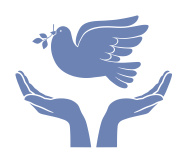The Evolution of Peace

August Events That Changed the World
August 2, 2017
Keeping the Spirit of ’45 Alive
August 16, 2017Seventy-two years ago on August 9 at 11:02 a.m. and 1,650 feet above the city, the second atom bomb nicknamed Fat Man was dropped on Japan. The target was Nagasaki, the shipbuilding center of the country. It was quickly devastated by this explosion that had the equivalent force of 22,000 tons of TNT. Three days earlier the first atomic bomb had been dropped on Hiroshima, but sadly the recalcitrant Japanese War Council was not ready to accept the terms of an unconditional surrender. It was not until after the bombing of Nagasaki that Japanese Emperor Hirohito and Prime Minister Suzuki decided to seek immediate peace with the Allies.
On the day that first bomb was dropped on Hiroshima, my father, technical sergeant Roland Jett was somewhere in Luzon. When the Philippines were finally liberated in early July, he had been shipped from New Guinea to Manila to rejoin his company and members of the 6th Army I Corp. Most likely they were still building their new camp site north of Manila when the first bomb was dropped on August 6. It was not until three days later that he acknowledged he had heard about an atomic bomb which had been “made” in Tennessee. His correspondence over the next few days highlighted the historic events occurring not far from his location.
On August 11, he wrote that he had heard rumblings about Japan trying to make peace, but he was not confident of that news. Was it true or just another rumor? His doubt was evident in his next letter dated August 14, “Even tho the war news over the radio sounds like the war is about to come to a close, we go about our work as usual and keep hoping it will be true. There seems to be a lot of doubt about the whole thing. We have heard so many rumors since the war started; we don’t believe anything we hear.”
Rol along with the weary troops were eager for this war to end. They had been putting their lives on the line for months, but was it really over? His letter the next day confirmed the good news, “Darling, we just received the official news that the war is over. The time down here is 9:00. My first thought of rejoicing is of you.”
Even though the war was officially over, the work of the service troops would continue in the hot, humid Filipino jungles until they got their official orders to return home. His hope and that of his fellow soldiers was for a speedy discharge and an even faster, safe return to the US and their families. He did get home safely, but it was a long slow process that took him through Japan. While he had no desire to go there, the Army’s 11th Replacement Depot was located in Okazaki. He had no choice.
As his LST #771 prepared to land at Wakayama on October 24, he was apprehensive about interacting with the Japanese. What were they like and how would they react to the soldiers who had recently defeated them? His first encounter came the next day when his company finally arrived in Kyoto. I am not sure who was the most surprised in meeting their enemy…the American soldiers or the Japanese citizens. My father’s comments capture his reaction, “Well! The one thing that I really didn’t expect to find here is the way people treat us. Of course they dare not make a crooked move, but they are so dumbfounded at the great army and equipment we have. Everything is so superior to what they have and they are just now beginning to realize that we are human and don’t intend to cut their heads off as they have no doubt been told.” And so the healing process begins.
As I read his comments I wondered if both sides had similar emotions: fear and uncertainty about their new future. Today, I think both sides would be surprised at how far we have all come. I am sure they could not have imagined this evolution of peace seventy-two years ago.
Today there is no animosity or resentment in the diverse faces of the customers at our popular, local Japanese restaurant. We are all there enjoying the traditional Japanese fare that has been introduced to mainstream America. Our cultures and pasts have blended in unexpected ways. Could anyone have imagined a Japanese girl marrying a Jewish boy? Well, several years ago, I attended the wedding of my summer intern, a bright and well-educated young woman. Her new husband was Jewish, and it was my first Jewish, Japanese wedding. What a special couple, and what a memorable ceremony we witnessed that day as they combined the traditions and values of their respective culture. I doubt if anyone in 1945 could have imagined that scenario. Granted I live in the San Francisco Bay Area which prides itself on its diversity. But what is it that teaches us that we are all human beings joined together in this circle of life?
 While I don’t have the answer, I am grateful for the result: the opportunity to have worked with many talented Japanese professionals in the federal government and the development of strong friendships. Each time my girlfriend and I get together, we don’t think about our backgrounds—my southern heritage or her Japanese culture. Instead we laugh about our similar personalities and how much we have in common. Yet there was a time when fear and caution would have overshadowed this. Her Japanese relatives were U.S. citizens, living in the Bay area when the war began. They along with many other Japanese families were forced to leave their homes and go to internment camps.
While I don’t have the answer, I am grateful for the result: the opportunity to have worked with many talented Japanese professionals in the federal government and the development of strong friendships. Each time my girlfriend and I get together, we don’t think about our backgrounds—my southern heritage or her Japanese culture. Instead we laugh about our similar personalities and how much we have in common. Yet there was a time when fear and caution would have overshadowed this. Her Japanese relatives were U.S. citizens, living in the Bay area when the war began. They along with many other Japanese families were forced to leave their homes and go to internment camps.
That was then. On this anniversary of the bombing of Nagasaki, we pause in recognition of that past. It cannot be changed but we can. We can continue to evolve with respect for fundamental human rights and the gift of peace that so many courageous men and women won for us.

